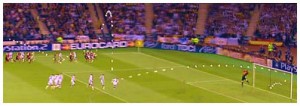How Can Physical Therapy Help After a Concussion?
 After a diagnosis of concussion, physical therapists can help to evaluate and treat many problems that follow a head injury, including dizziness, difficulty with balance, and neck injuries. Because no two injuries are the same, the physical therapist’s examination is essential to assess a recovering individual symptoms and limitations. The physical therapist then designs a treatment program.
After a diagnosis of concussion, physical therapists can help to evaluate and treat many problems that follow a head injury, including dizziness, difficulty with balance, and neck injuries. Because no two injuries are the same, the physical therapist’s examination is essential to assess a recovering individual symptoms and limitations. The physical therapist then designs a treatment program.
The two main programs physical therapists use following a concussion are designed to:
- Help Stop Dizziness and Improve Your Balance
If you have dizziness or difficulty with your balance following a concussion, vestibular physical therapy may help. The vestibular system, which includes the inner ear and its connections with the brain, is responsible for sensing head movement, keeping your eyes focused when you move your head, and helping you keep your balance. A qualified vestibular physical therapist can provide specific exercises and training to reduce or stop dizziness and improve balance and stability. - Reduce Headaches
Your physical therapist will examine you for neck problems following a concussion. Neck injuries can cause headaches and contribute to some forms of dizziness. Your therapist also can assess your back for possible injuries to your spine. When it comes to treating neck and spine pain techniques like the McKenzie Method can help manage recurring pain.
During recovery, as symptoms due to concussion improve, your physical therapist can also help you adjust your routine and resume physical activity gradually, to avoid overloading the brain and nervous system that have been compromised by concussion.

